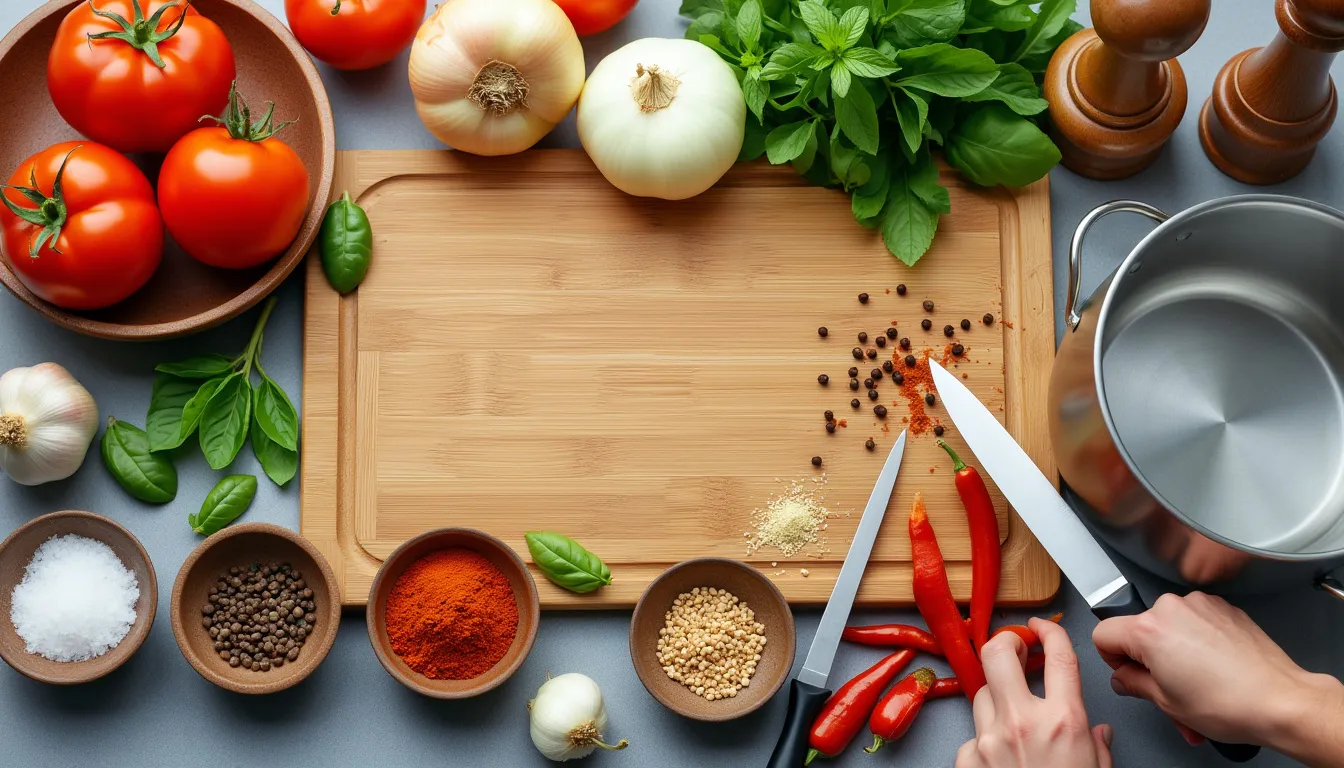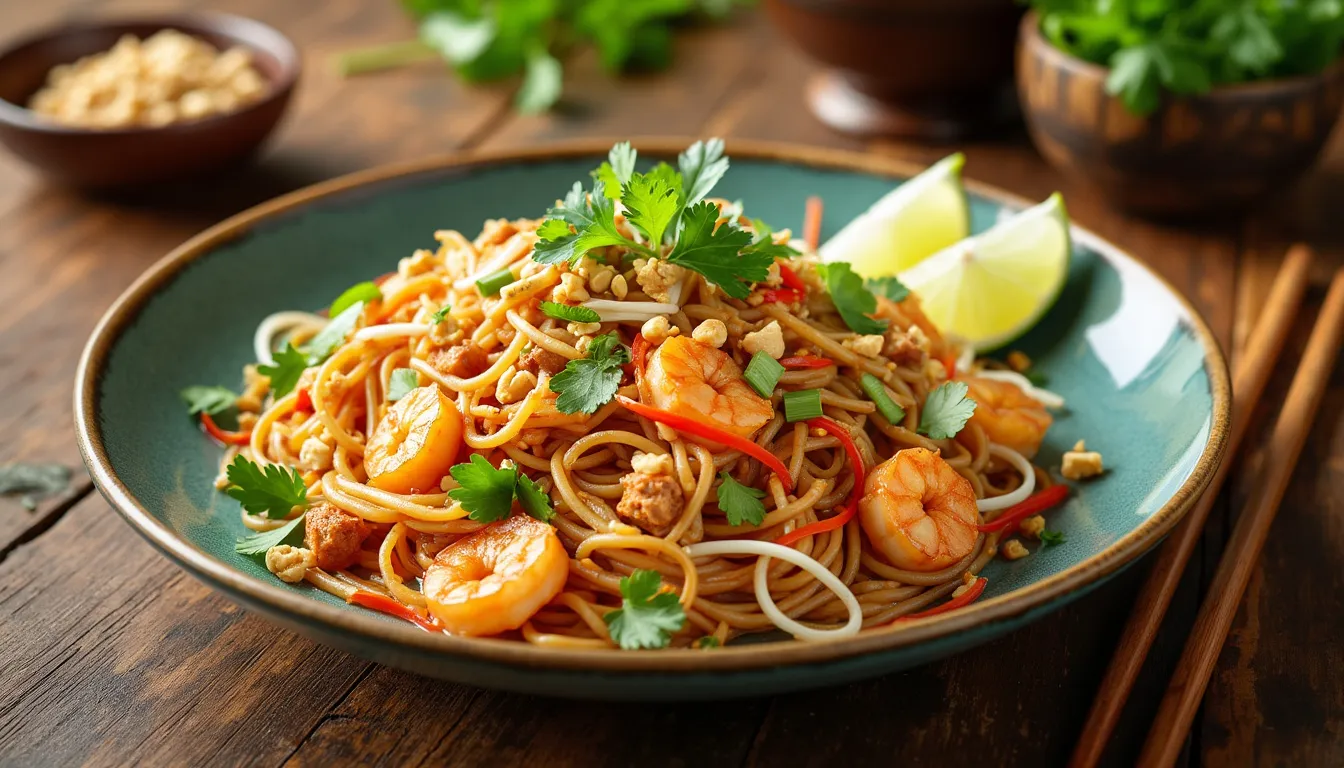If you’re a culinary enthusiast or simply a lover of delectable Asian dishes, chances are you’ve heard of Pad Thai. This quintessential Thai street food has earned its place in kitchens and dining tables around the world, not just as a tasty meal but as a cultural symbol of Thailand itself. In this ultimate guide to Pad Thai Classic, we’ll delve into the fascinating history and origin of this iconic dish, unravel what makes Pad Thai Classic truly unique, and offer a thorough exploration of the essential ingredients and preparation techniques. By the end of this guide, you’ll be armed with the know-how to transform simple ingredients into a mouthwatering masterpiece.
Pad Thai Classic, also known in its homeland as Phad Thai, is an ingenious blend of flavors and textures, combining sweet, salty, and sour elements with a satisfying crunch. Originating during the World War II era, this dish was promoted by the Thai government to establish a sense of national identity while utilizing readily available ingredients. What sets Pad Thai Classic apart from other variations is its unwavering dedication to traditional methods and authentic components.
A truly authentic Pad Thai Classic hinges on the exceptional quality of its ingredients. Fresh rice noodles, plump shrimp, tangy tamarind paste, and crunchy peanuts are just a few key players in this culinary symphony. Mastering the art of Pad Thai Classic involves understanding each ingredient’s role and how they harmonize in perfect balance. Our guide will walk you through step-by-step cooking instructions, ensuring you can replicate this delicious dish with precision and flair.
Dive into this ultimate guide and discover why Pad Thai Classic remains an enduring favorite across the globe. Whether you’re a seasoned cook or a novice in the kitchen, this article is designed to help you create an authentic, irresistibly delicious Pad Thai Classic that will impress your friends and family. Get ready to embark on a flavorful journey that celebrates the rich heritage and culinary excellence of Thailand.
Introduction to Pad Thai Classic
Brief History and Origin
Pad Thai Classic is one of Thailand’s most beloved dishes, rooted in a rich culinary history that dates back to the 1930s. Initially conceptualized as part of a nationwide effort to create a sense of unity and nationalism through food, Pad Thai quickly gained popularity. Its introduction can be attributed to Prime Minister Plaek Phibunsongkhram, who sought to reduce rice consumption during World War II due to shortages. By promoting a noodle-based dish like Pad Thai, the government was able to preserve the national rice supply while introducing a nutritious and affordable meal to the Thai people.
Pad Thai Classic has since become one of Thailand’s signature dishes, celebrated for its harmonious blend of flavors and textures. Over time, it has become an ambassador of Thai cuisine globally, enticing food lovers with its perfect balance of sweet, sour, salty, and savory elements. While it originally used local ingredients and simple preparation methods, the core essence of Pad Thai has remained relatively unchanged, continuing to honor its heritage while adapting to modern tastes.
What Makes Pad Thai Classic Unique
So, what sets Pad Thai Classic apart from other noodle dishes? The uniqueness of Pad Thai Classic lies in its distinctive combination of ingredients and the meticulous balance of flavors. A hallmark of Thai cuisine, this dish masterfully blends sweet, tangy tamarind paste, umami-rich fish sauce, and zesty lime juice, creating an explosion of taste with every bite. The addition of crunchy peanuts, fresh bean sprouts, and aromatic herbs elevates the dish, adding layers of texture and complexity.
The preparation of Pad Thai Classic also deserves mention. Unlike many stir-fried noodle dishes, Pad Thai requires a specific sequence of cooking and ingredient addition to achieve its authentic taste. Eggs, tofu, shrimp or chicken, and noodles—all cooked to perfection—meld seamlessly into a cohesive dish that defies culinary boundaries.
Another unique aspect is the adaptability of Pad Thai Classic to cater to different dietary preferences without sacrificing its core essence. Whether you’re a meat lover, vegetarian, or vegan, there’s a version of Pad Thai that can fit your needs. Such versatility has made Pad Thai an enduring favorite among diverse eaters, further boosting its global appeal.
The cultural significance of Pad Thai Classic also adds to its uniqueness. Many Thai families cherish this dish, with recipes passed down through generations. Each variation tells a story of personal and familial history, blending tradition with culinary artistry. Chefs and home cooks alike place a high value on achieving the perfect Pad Thai, treating it less as a dish and more as a testament to Thailand’s culinary heritage.
In essence, Pad Thai Classic is more than just a meal; it’s an experience that captures the heart of Thai culture and cuisine. From its historical roots and specialized preparation techniques to its universal adaptability and cultural importance, Pad Thai Classic holds a revered place both in Thailand and in the annals of global gastronomy. Whether you’re a seasoned foodie or a curious palate, understanding the intricacies of Pad Thai Classic will deepen your appreciation for this timeless dish.

The Essential Ingredients and Preparation Techniques
Key Ingredients for Authentic Pad Thai Classic
Creating an authentic plate of Pad Thai Classic starts with assembling the right ingredients. Each element plays a critical role in achieving the perfect balance of flavors – sweet, sour, salty, and umami. Here are the essentials:
- Rice Noodles: Opt for thin, flat rice noodles that cook quickly and absorb flavors well. They should be soaked in warm water until they are pliable but not mushy.
- Tamarind Paste: This is the cornerstone of the iconic Pad Thai Classic flavor. Made from tamarind fruit, it adds tanginess to the dish.
- Fish Sauce: A small quantity adds crucial depth and saltiness, characteristic of authentic Thai cuisine.
- Palm Sugar: Traditionally used for its caramelly sweetness, though you can substitute with light brown sugar in a pinch.
- Protein: Chicken, shrimp, tofu, or a combination thereof can be added depending on your preference.
- Garlic and Shallots: These aromatics form the base of many Thai dishes, adding an intense, savory aroma.
- Egg: Provides texture and richness, scrambled directly into the noodles.
- Bean Sprouts: These add a refreshing crunch to balance the softness of noodles.
- Peanuts: Roasted and crushed, they offer a nutty, savory component to the dish.
- Lime: Fresh lime wedges are indispensable for adding a hit of acidity and freshness.
- Scallions: Often used as a garnish, they provide a sharp, green flavor that complements the other ingredients.
- Red Chili Flakes: Optional, for those who prefer some heat in their Pad Thai Classic.
Step-by-Step Cooking Instructions
Once you have gathered all your ingredients, you’re ready to prepare the Pad Thai Classic. Follow these step-by-step instructions to achieve a perfect dish every time.
- Prepare the Noodles: Start by soaking the rice noodles in warm water for 20-30 minutes until they are pliable but still slightly firm to the bite. Drain and set them aside.
- Make the Sauce: In a small bowl, combine tamarind paste, fish sauce, and palm sugar. Stir until the sugar dissolves. Adjust the balance of flavors according to your taste – it should be a harmonious blend of sweet, salty, and sour.
- Cook the Protein: Heat a wok or large skillet over medium-high heat. Add a tablespoon of oil. Once hot, add your chosen protein (chicken, shrimp, or tofu) and sauté until cooked through. Remove the protein from the pan and set aside.
- Cook the Aromatics: In the same pan, add another tablespoon of oil. Add chopped garlic and shallots, stirring frequently to avoid burning. Cook until fragrant and slightly browned.
- Add the Noodles: Increase the heat to high. Add the soaked and drained noodles to the pan, stirring consistently to prevent sticking. Pour the prepared sauce over the noodles, ensuring even distribution.
- Scramble the Egg: Push the noodles to one side of the pan. Crack an egg into the empty side and scramble it until it just sets. Then mix it into the noodles.
- Combine Ingredients: Add the cooked protein back into the pan along with bean sprouts and chopped scallions. Toss everything together to mix well.
- Adjust Seasoning: Taste the noodles and adjust seasoning with additional fish sauce, tamarind paste, or a pinch of salt if necessary.
- Plate and Garnish: Transfer the Pad Thai Classic to a serving plate. Garnish with crushed peanuts, a lime wedge, and extra bean sprouts or scallions.
- Serve Immediately: Pad Thai Classic is best enjoyed fresh, while the noodles are still tender and the flavors are vibrant. Squeeze a lime wedge over the top before eating to enhance the taste.
Creating Pad Thai Classic at home may seem daunting at first, but with these key ingredients and steps, you can master this dish. Enjoy the rich symphony of flavors and textures in your homemade Pad Thai Classic!
In conclusion, mastering the art of Pad Thai Classic not only allows one to indulge in a sumptuous dish but also offers a deep dive into a rich cultural heritage. The blend of flavors, from tart tamarind to savory fish sauce, along with the satisfying textures of rice noodles, crunchy peanuts, and crisp bean sprouts, encapsulates the essence of Thai cuisine. Understanding the essential ingredients and preparation techniques is crucial to crafting an authentic dish that respects its historical roots and maintains its unique characteristics. By following the step-by-step cooking instructions, anyone can recreate this timeless Thai favorite, bringing a taste of Thailand into their own kitchen. Through practice and refinement, making Pad Thai Classic can become an enjoyable and rewarding culinary experience, offering not just a meal, but a celebration of history and tradition on your plate.







